Bassoon ba song cuo
Basongtao, also known as Caogao Lake, means "green water" in Tibetan. It is about 18 kilometers long. Its surface area is about 27 square kilometers. Its deepest depth is 120 meters and its surface is 3480 meters above sea level. Located in the high gorge and deep valley of the upper reaches of the Bahe River, about 36 kilometers from Bahe Town, Gongbujiangda County, it is a famous sacred lake and holy place of the Red Religion.
Basongcuo was awarded the National Scenic Spot in 1994 and the World Tourism Organization as the World Tourism Spot. In 2000, it was awarded the first batch of National 4A Scenic Spots by the National Tourism Administration. In 2001, it was awarded the title of National Forest Park by the Ministry of Forestry.
In August 2017, Tibet became the first and only national 5A scenic spot with natural scenery.
Traffic information
At the entrance of Taizhao Hotel in Bayi Town, there is a shuttle bus to Basong Co., about 120 kilometers. The fare is 60 yuan and the journey is 2-2.5 hours. Charter fares vary depending on the type of car, usually around 600 yuan a day, or according to the number of kilometers, 4-5 yuan per kilometer.
Starting from Lhasa city, we crossed Mila Pass along Linla Highway and drove 320 kilometers to Bahe Town (about 3 hours'drive and speed limit 100Km/h). The exit of Bahe Town turned left with a road sign leading to Basongkou Scenic Spot. Then we drove about 36 kilometers along the wrong Highway (with road signs indicating that the road condition is very good, all of which are parking pavement) to the Scenic Spot (small car limit). Speed 60, speed limit 50, the whole journey takes about 4 hours.
Landscape characteristics
The Basongcuo Scenic Area is about 18 kilometers long. The Lake area is about 27 square kilometers. The deepest part of the lake is 120 meters. The lake is 3480 meters above sea level. It is the lowest Lake in Tibet (Namcuo 4730 meters above sea level and Yangzhuoyong 4440 meters above sea level). The scenic area is densely forested and has a higher oxygen content than other lakes, which generally does not cause plateau reaction.
Set snow mountains, lakes, forests, waterfalls and pastures, cultural relics and historic sites, ancient temples as a whole, different scenery, four different seasons, rare species of wild plants gathered, it is a paradise on earth, has the reputation of "Little Switzerland".
Basongcuo is located in the upper reaches of the Bahe River, about 36 kilometers from the town of Bahe, Gongbujiangda County, Linzhi City, 120 kilometers from Bayi Town and 360 kilometers from Lhasa City. It is a famous sacred lake and sacred place of the Red Religion (Ningma Sect of Tibetan Buddhism). Although Basongcuo is deeply hidden in the mountain ditches far away from towns and traffic congestion, it is widely known to the outside world for its lush forests and the pool of clear water in the mountains, and has become one of the earliest known scenic spots in Linzhi area.
The waters of Lake Basongtsuo are clear to the bottom, and the snow mountains around it are reflected in it. Sand gulls and white cranes float on the lake. The lake water is transparent and the swimming fish are knitted. Every spring, the lake is surrounded by flowers, snow peaks array and reflection of the lake, the scenery is very pleasant. In autumn, the mountains are red all over , the forests are dyed all over, the sky is blue, the red maple leaves reflect the brilliant sunshine, reflecting on the blue lake, and the scenery is beautiful. About 100 meters from the shore, there is an island called Zaxi Island, which is said to be "hollow island", that is, the island is not connected to the bottom of the lake but floating on the lake. Although it's only a legend, it's amazing. You might as well try stamping somewhere on the island to see if it feels hollow.
On the island is the Tang Dynasty building "Chuozong Gongba Temple", a famous Red Religion Ningma Temple in Tibet. It was built in the late Tang Dynasty and has a history of more than 1500 years. The Chuozong Temple is a civil structure with two floors. The main body of the temple is for lotus and peanuts, thousand-handed Guanyin and golden girl and jade girl. There is a peach and pine tree in the south of the temple. In spring, the peach blossoms and the pine trees are very beautiful.
On the Hunan shore of Basongcao, beside a stream, there is also a "Qiuzi Cave" full of magical legends. Legend has it that this cave was once blessed by Master Lotus and Peanut, and it is very effective to come here to beg for a son. There are 15 square meters of huge rocks in the northwest of the lake. There is a hole in the center of the big rocks that can be drilled by one person. It is said that the hole can be drilled to eliminate disasters and diseases. Not far from here, on the beach, there is the "Lotus and Peanut Practice Cave". On the West Bank of the lake is the "King Gesar's Arrow Test Site". It is said that on the 15th day of the Tibetan calendar every year, a long white belt will grow in the center line of the lake bottom below the blue lake. The locals say that it is a huge white Hada dedicated to King Gesar.
Main attractions
Primitive Ecology Museum
Unlike other Shenhu lakes in Tibet, Basongcuo (also known as Caogao Lake, which means "three rocks and three lakes" in Tibetan) is completely surrounded by lush primitive forests. Indeed, as its name suggests, Basongtso is green, green without impurities, like a light jade. The lake is clear enough to see fish swimming in groups under two or three meters. The mountains around are like dai, and the peak is snow that never changes all the year round. The snow mountains by the lake and the snow mountains reflected on the lake are entangled with each other, continuous and spectacular! The most rare thing is that very few people are here now, completely isolated from the outside world.
Tashi Island
To Zhaxi Island in the center of the lake, you can take a hand-pulled "boat" (a row of rafts made of floating logs, ferrymen pulling a steel cable across the two sides of the river to and fro). On Zhaxi Island, the Buddhist Sutra is flying. The exquisite Cuozhong Gongba Temple (meaning Huzhong Castle) belongs to the Ningma Sect (Red Sect) Temple of Tibetan Buddhism. It has a history of 1500 years. There are countless legends in the temple alone. Turning the island clockwise, you can also see the footprints left by King Gesar's warhorses, the marks left by swords waving on stones, the pines of peaches, the former water funeral tables, the "letter trees" with naturally formed Tibetan letters on the leaves, and the springs of lotus and peanuts washing their faces... It can be said that there is magic in every step.
Stuttering Village
Even if you have been to Lhasa and Everest, Linzhi will be surprised. Simple and ancient humanistic primitive ecology is also a fascinating place for Basongcuo.
Tibetans living in Gongbu Jiangda County are called "Gongbu people" by other Tibetan people. They have their own clothes, unique buildings, different festivals, and even different languages from other Tibetans. They walk in natural and primitive villages such as Jieba Village, Cuoguo Village and Zara Village, where they can see Gongbu people's kind smiles everywhere.
There are more than 80 farmhouses in the original Tibetan village of Jiba, which is a relatively large village in the area. It is said that there are still a few polygamous and polygamous families in the village. Both men and women in the village like to wear "fruit show" (woolen gown) made of bathrooms, and wear black and white wrapped felting caps with wrapped flowers. Women wear silver chains, jewelry and a monkey skin shoulder.
Push aside a family at will and you will be warmly entertained by them. There are fire ponds, stone pots, aluminium pots and so on in the house. They can cook and warm. The lights are alpine pine pine hanging in the air. The firewood is very good quality Qinggang wood. The roof has been smoked black. They are stocked Tibetan pigs, baked wheat slices on slate, pine roast chicken, barley fish and highland barley noodles, and the best highland barley wine is served. It takes a lot of courage to go to the bathroom. It's just a wooden house hanging in the middle of the room outside the second floor.
Snow Mountain
In the flowers and trees, there is a quiet villa like a private garden. If you wake up in any morning in Basongtso, if you live in a room with Mianshan, you can see the snow mountain with your eyelids raised. It's a luxurious happiness.
Not far from the shore, some trees stand, sway and stretch in the water vigorously and flexibly. The garden in the afternoon was quiet and sunny. Walking along the forest path is like being in a paradise. The azaleas, four or five meters high, red and bell-like, are blooming on both sides of the road. Catch up with the season of wild strawberries, pick a few, honey teeth, fragrance between the tongue... You can also spend most of your time in a daze: sitting in the courtyard of a restaurant full of purple and red flowers, asking for a pot of milk tea, holding a book, taking a nap in the sun, and relaxing through the afternoon until the snow mountain in front of you is lit by the setting sun.
Lake Island
Legends abound on the island, Basuncoo
On Huzhong Island, there is the Caozhong Gongba Temple, which is said to have been built more than 600 years ago by the Ningma Senior Monk Sanjielinba. The "Caozhong" means "the castle in the lake". Cuozhong Gongba Temple is a wooden and stone structure with two floors of upper and lower layers for many Buddhist statues. It was built in the late Tang Dynasty. There are three giant Buddha statues in the temple: Maitreya Buddha in the middle, sitting on the lotus terrace with a grinning smile; Guanyin of Thousand Hands on the left, and Jade Girl of the Golden Child on the right.
Tourism information
The best season for Basongtao is autumn. The sky is high, the wind is cool and the clouds are light. From the lakeside to the mountains, the mountains are covered with forest. The rich color and quiet environment are the good time for photographers to murder the film. Because of the dense forest along the lakeside, it is difficult to photograph Zhaxi Island in the center of the lake. It is necessary to climb up the mountain forest behind the Basongtao Resort to have a chance to photograph the beautiful scenery of the island in the center of the lake like a gem embedded in the green lake. In addition to such scenes, the general shooting theme of Ba Song Cho Bian is mostly small scenes, requiring the photographer's unique vision to discover .
Board and lodging
In recent years, Basongcao has developed into a mature tourist and leisure resort with convenient accommodation, high restaurant prices and general hygienic conditions.
Tourist route
Hitchhiking to Bassoon
Basongcuo is located beside National Highway 318, 70 kilometers away from Gongbujiangda County Town. It has more vehicles and convenient transportation. If you go by bus, you can get off at the fork of the "Basongtao Scenic Spot" sign on the side of the highway. Then you can travel about 36 kilometers northward from Bahe Town to Lake Basongtao.
Chartered, self-driving to Bassoon
Chartered bus to Basongtso is the most suitable one in Bayi Town. Bayi Town is 120 kilometers away from Basongtao. If you spend the night in Bassoon, you have to pay for the driver's board and lodging.
Starting from Lhasa, we can get to Basongtao in four hours. The whole journey is about 360 kilometers, all of which are asphalt roads. The black road from Bahe River to the resort has also been built. It may be the best road in Tibet section of Sichuan-Tibet line. Buy a bus ticket from Lhasa to Bayi Town, get off at Bahe Town, and then take a bus or a line bus from Bahe Town to Basong staggered scenic spot.
Ba He Town
Bahe Town is the only entrance to Basongchuo. Buses from Lhasa to Linzhi can stop in Bahe Town (because all passenger vehicles turn to Linla Highway, drivers need to be reminded to get off in advance) and both hitchhikers and line buses can get to Basongchuo Scenic Area in Bahe Town.
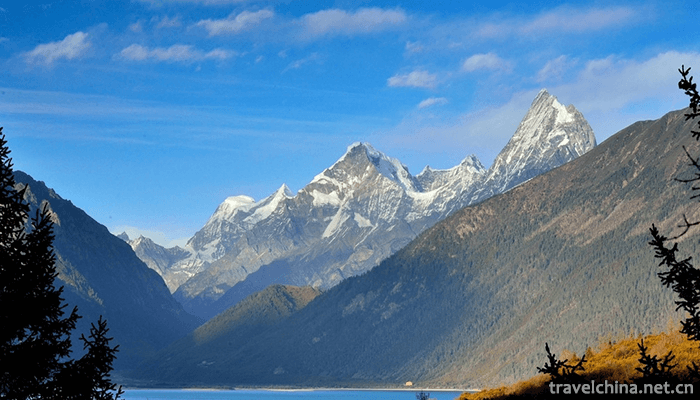


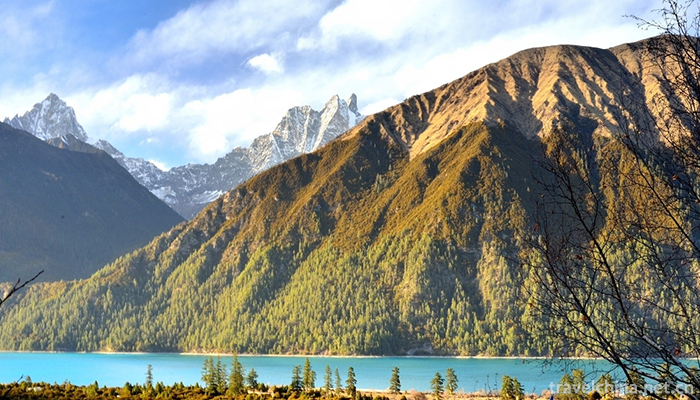

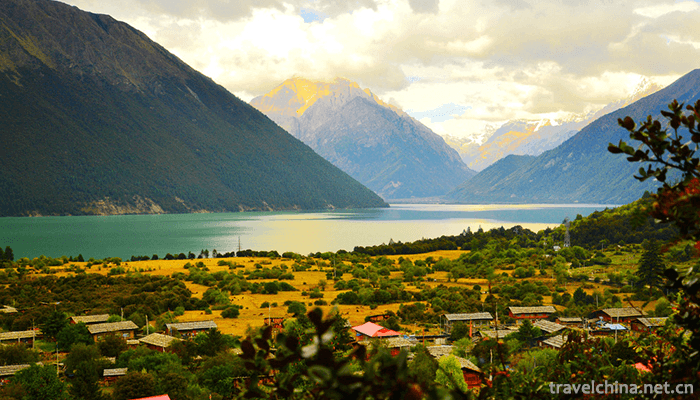
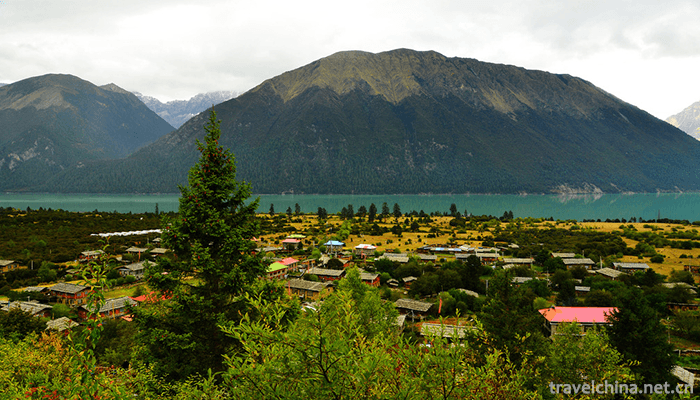
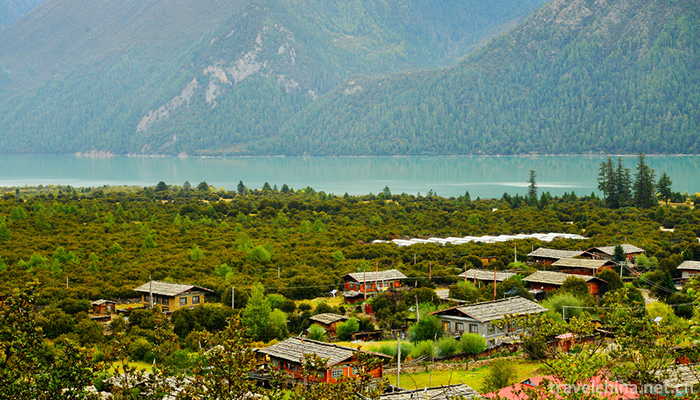



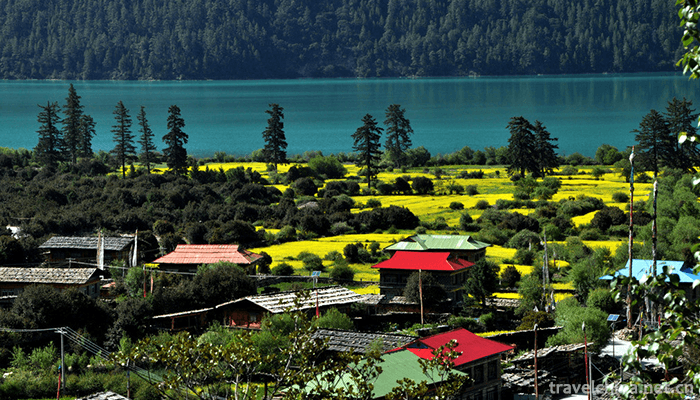
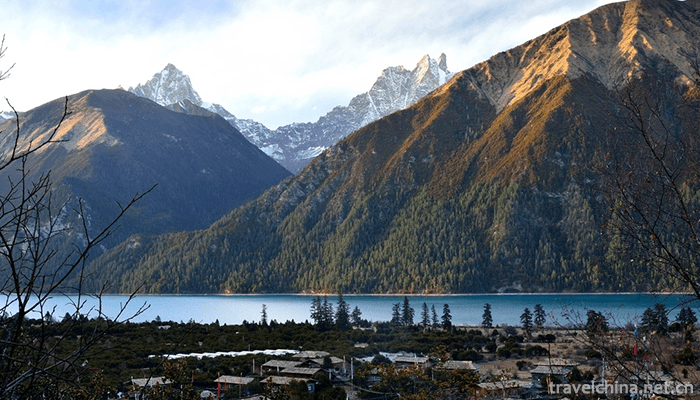
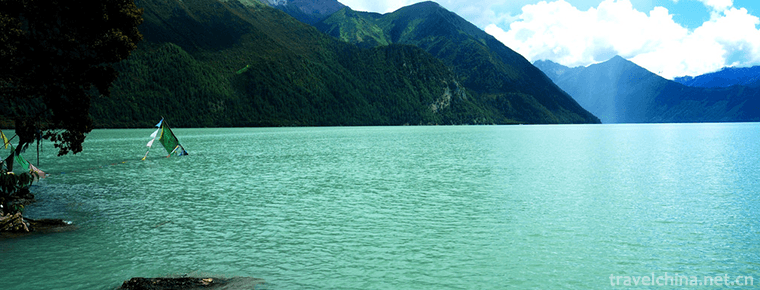
-
1.Sannong Expo Park
Shenyang Sannong Expo Park is located in the south of Daliutun Town, Xinmin City, Liaoning Province. It is 15 kilometers away from Xinmin City and 75 kilometers away from Shenyang City. It was built i
Time 2018-12-18 -
2.Asihatu Stone Forest
Chaihe Tourist Scenic Spot has a total area of 1368.7 square kilometers, which is a national 5A tourist scenic spot. The area of Alshan City in Xing'an League is 7408.7 square kilometers, and Chaihe T
Time 2019-01-02 -
3.Jizu Mountain Scenic Spot in Binchuan
Jizu Mountain is located in a cave-making area about 20 kilometers west of Binchuan County, Yunnan Province, 90 kilometers away from Dali City. It is named for its three peaks in the front and a ridge
Time 2019-01-03 -
4.Xue Xiang Snow Township
Snow Township, the full name of "China Snow Township National Forest Park", is located in Changting Town, Hailin City, Mudanjiang City, Heilongjiang Province, China, and belongs to the Dahai
Time 2019-02-27 -
6.Avanti
Avanti, also translated by the Albanian side, (Uygur "Mr." means, Arabic: Juha or Nazar Ding), is a person active in Islamic nationalities from Morocco in the west to Xinjiang in China.
Time 2019-03-28 -
7.Jiujiang folk songs
Jiujiang folk song is a traditional folk song that is popular in the surrounding areas of Chengmen, Ma Huiling, Huanglao Men, Lion and Chengzi Town in Jiangzhou District, Jiujiang City
Time 2019-05-08 -
8.Beach Head Wood Engraving New Year Pictures
Tantou woodcut New Year's picture is the only handmade woodcut watermarking New Year's picture in Hunan Province. It has its own style with strong local characteristics in southern Chu. Tantou Town is
Time 2019-06-18 -
9.Chinese history
Chinese history From China Chinese civilization To the present history. China has a long history. Since the Huangdi tribe Ji Xuanyuan (also known as the Gong sun Xuanyuan) period has been counted for
Time 2019-08-28 -
10.The changing style of Cheongsam
After a hundred years of evolution, with the change of people's life style and aesthetic taste, cheongsam has developed a variety of styles, which makes people dazzled. In the golden age of the development of Cheongsam in the 1930s and 1940s, the styles of cheongsam changed
Time 2020-12-11 -
11.Nanchong location
Nanchong City is located in the northeast of Sichuan Basin, in the middle reaches of Jialing River, between 30 ° 35 ′ N ~ 31 ° 51 ′ N and 105 ° 27 ′ ~ 106 ° 58 ′ E. With a span of 165 km from north to South and 143 km from east to west, it is adjacent to Dazhou
Time 2020-12-17 -
12.History and culture of Yibin
Yibin has 34 world-class, national and provincial scenic spots and 58 national and provincial key cultural relics protection units. Among them, there are seven cave cliff tombs (Eastern Han Dynasty), Jiuzhou tower (Song Dynasty), Daguanlou (Qing Dynasty), etc.
Time 2020-12-18